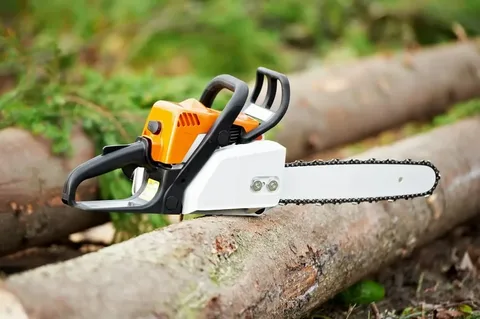Felling a tree is a serious task that requires preparation, knowledge, and the right equipment. One of the most efficient tools for this job is a chainsaw—but it can also be one of the most dangerous if not used correctly. This guide will walk you through how to fell a tree safely using a chainsaw, ensuring that you minimize risk and get the job done right.
Why Safety Matters
Tree felling involves significant risks: falling branches, kickback from the chainsaw, and the unpredictable direction in which the tree might fall. Understanding how to fell a tree safely using a chainsaw isn’t just a matter of efficiency—it’s about protecting yourself and others.
Preparation is Key
1. Inspect the Tree and Surroundings
Before making any cuts, inspect the tree carefully. Look for:
- Leaning direction of the tree
- Dead or hanging limbs
- Signs of disease or rot
- Obstructions in the fall path (e.g., other trees, power lines, structures)
You should also plan two escape routes at a 45-degree angle away from the direction of the fall.
2. Check Equipment
Make sure your chainsaw is sharp, fueled, and in proper working condition. Wear the following safety gear:
- Helmet with face shield
- Hearing protection
- Chainsaw chaps
- Gloves
- Steel-toed boots
Making the Cuts
Understanding the cutting technique is essential to fell a tree safely using a chainsaw.
1. Create the Notch Cut
This is the directional cut that controls where the tree will fall.
- Face Cut (Notch Cut): Make a 70-degree cut downward at about knee height into the tree, cutting about 1/3 into the trunk.
- Make a horizontal cut underneath that meets the bottom of the first cut, removing a wedge.
2. Make the Felling Cut
- Move to the opposite side of the tree.
- Cut horizontally just above the bottom of the notch.
- Stop cutting when only a thin “hinge” of uncut wood remains—this guides the tree’s fall.
- As the tree begins to lean, step away along one of your pre-planned escape routes.
Final Safety Tips
- Never cut above shoulder height.
- Don’t turn your back on the falling tree.
- Be aware of kickback—hold the saw firmly with both hands.
- Only fell trees when weather and visibility conditions are good.
Conclusion
Knowing how to fell a tree safely using a chainsaw can save time, prevent injury, and protect property. With the proper preparation, technique, and safety measures, even large trees can be brought down efficiently and without incident. Always respect the power of both nature and the tools you’re using.

